

Premium Eats: An Introduction to Wagyu
|
“Wagyu”: just the mention of this delicacy is enough to get gourmands and meat lovers salivating. The term wagyu (和牛) actually refers not to the food, but to cattle breeds that are unique to Japan. These include the Japanese Black Cattle, Japanese Brown Cattle, Japanese Shorthorn Cattle, Japanese Polled Cattle, and any crossbreeds between the aforementioned breeds of cattle. The high quality meat that these cattle produce are beef brands, and are often named after the region they are produced in, such as Kobe beef and Matsusaka beef.
Have you ever noticed what the alphabets and numbers advertised alongside wagyu beef mean? Those alphabets and numbers actually state the grade of the beef! Wagyu beef is graded on a scale developed by the Japan Meat Grading Association. This grade takes into account the yield grade and meat quality: yield grade, which refers to the ratio of meat that can be acquired from a single cattle, can be classified into three grades A to C, with A being the best; and meat quality, which is based on marbling, colour, brightness, firmness, and texture of the meat and fat, is graded from 5 to 1, with 5 being the best. Cuts that are accorded higher grades (such as the best grade, A5) are naturally more expensive and harder to obtain than cuts that are graded lower. However, higher rated meat does not always mean it is more delicious - this depends on the preference of the eater. For example, those that prefer their meat more firm and less fatty would probably not like the high fat content in top graded beef. There are hundreds of brands in Japan, but the top three beef brands are Kobe, Matsusaka, and Omi beef. These brands are also known and well-regarded internationally. Kobe beef is produced in the northernmost part of Hyogo Prefecture (of which Kobe is the capital city), and is sometimes known as Tajima beef. Matsusaka beef is produced in Mie Prefecture, and first shot to fame in 1935 when it won an honorary prize at a national beef cattle exposition in Tokyo. Omi beef comes from Shiga Prefecture, and is said to have the longest history out of the three, having been served as gifts to the shogun over 400 years ago. In order for the meat to be sold under the name “Kobe beef”, several strict conditions must be fulfilled. For example, Kobe beef can only be considered Kobe beef if the cattle was born and raised on a farm in Hyogo Prefecture, has a marbling ratio or meat quality that reaches a certain high score, and more! Matsusaka and Omi brand wagyu beef have similar standards in order to maintain the quality and reputation of its brand. Those interested can even trace the pedigree of the cattle they acquired their beef from, as wagyu usually have IDs issued to them - this is part of a system that helps ensure industry professionals and the public of the authenticity of cattles and the beef they produce. |
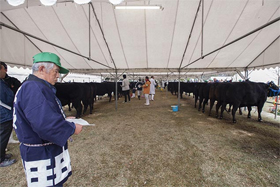 © Japan Up Close, Web Japan 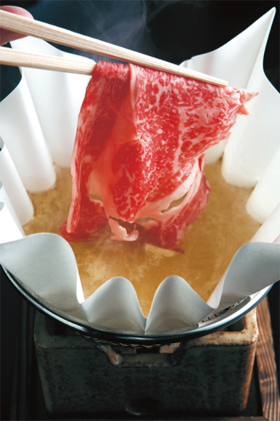 © Oyama Yuhei (Collaboration: Ginza Kojyu) 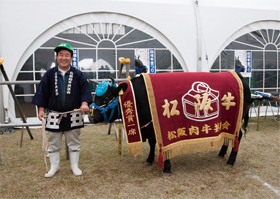 © Japan Up Close, Web Japan 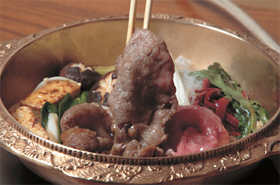 © Web Japan |
|
The top three brands of wagyu beef are all produced in the Kansai region, but other regions have their own famed brands as well. Farmers often experiment with different methods to produce higher quality meat, and often include nutritious produce from the region into feed. Hitachigyu beef cattle in Ibaraki Prefecture are fed barley and other grains, which contributes to its finely-marbled meat. In Chiba Prefecture, cattle are given iodine-rich water from the region to produce Kazusa beef. The Kyushu region is also known for its delicious beef brands, such as Bungo beef (Oita Prefecture), Miyazakigyu (Miyazaki Prefecture), and Kumamoto Akaushi (Kumamoto Prefecture). It is interesting to note that while most wagyu comes from Japanese Black Cattle, the Kumamoto Akaushi is produced primarily from the rare Japanese Brown Cattle.
As they are considered part of Japan’s heritage, wagyu cattle are raised with utmost care. Other methods that some farmers have incorporated into their cattle-raising routine include brushing of fur, and taking their cattle on frequent walks. On top of their carefully designed diets, cattle are also put out to graze in beautiful open land. Handlers pay special attention to their health, making sure to keep their environments as stress-free and clean as possible. Their careful nurturing of the cattle results in meat that has a soft, marbled texture, and delicious flavour. With each cattle raised with such care and attention, it is no wonder that wagyu beef is considered a relatively rare, and pricey delicacy. Wagyu can be enjoyed in many ways, although it is important to cook different types of beef accordingly to best bring out its flavour. For example, leaner beef with lower fat content is best served roasted, while beef with more fat marbling can be enjoyed as steak or in thin slices in dishes like sukiyaki and shabu shabu. With so many brands and cooking methods available, there is sure to be a wagyu beef dish that will suit your tastes! |
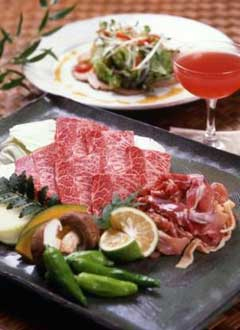 © Yufuin Tsukahara Highland Tourism Association/Oyado Yufunoshou 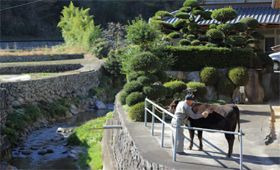 © Japan Up Close, Web Japan 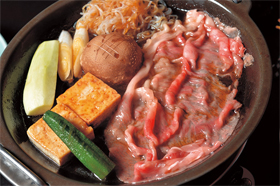 © Kohara Takahiro (Cooperation: Ningyocho IMAHAN Ueno Hirokoji Restaurant) |
Resources
|
Delectable Matsusaka Beef - Whatever it Takes to Offer the Best. (2016). Retrieved 18 January 2021, from https://japanupclose.web-japan.org/culture/c20161220_5.html |
|
Japan Creative Centre 4 Nassim Road, Singapore 258372 +65 6737 0434 / jcc@sn.mofa.go.jp https://www.sg.emb-japan.go.jp/JCC/ Nearest parking at Orchard Hotel & Delphi Orchard |
 |